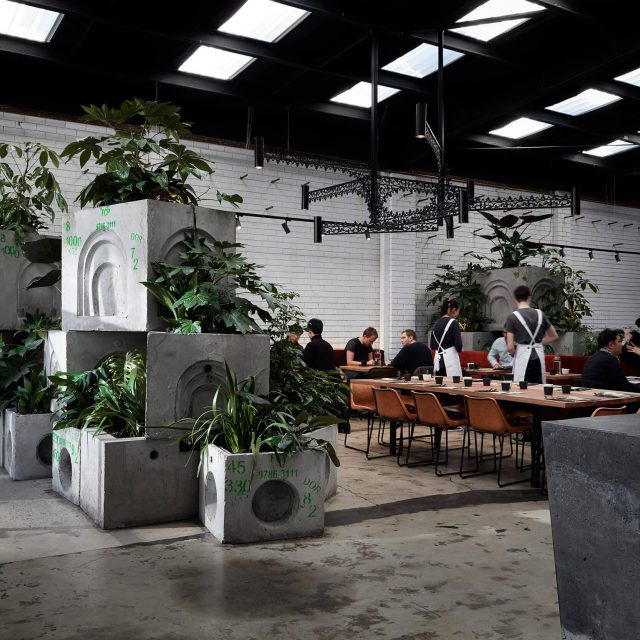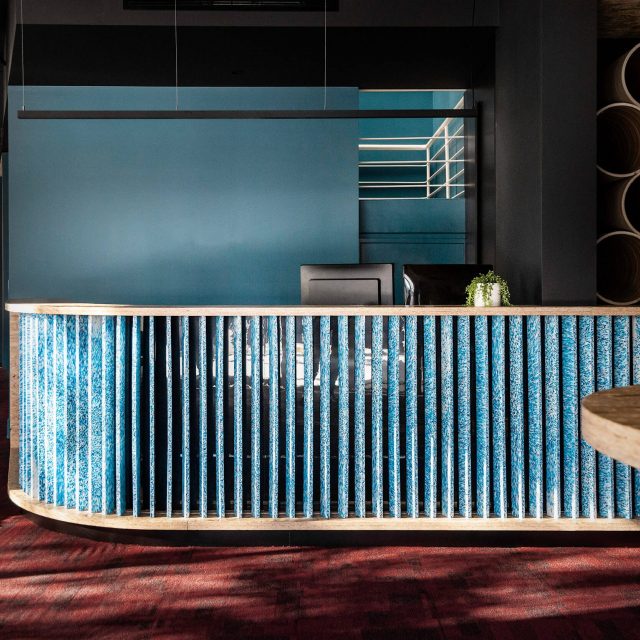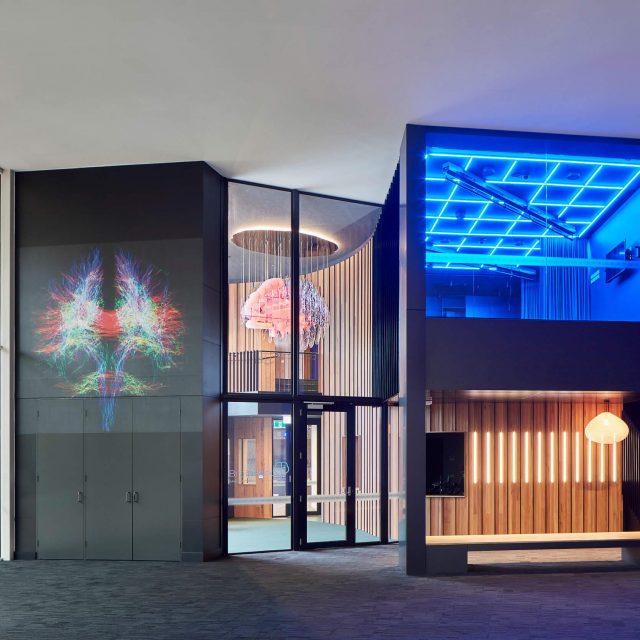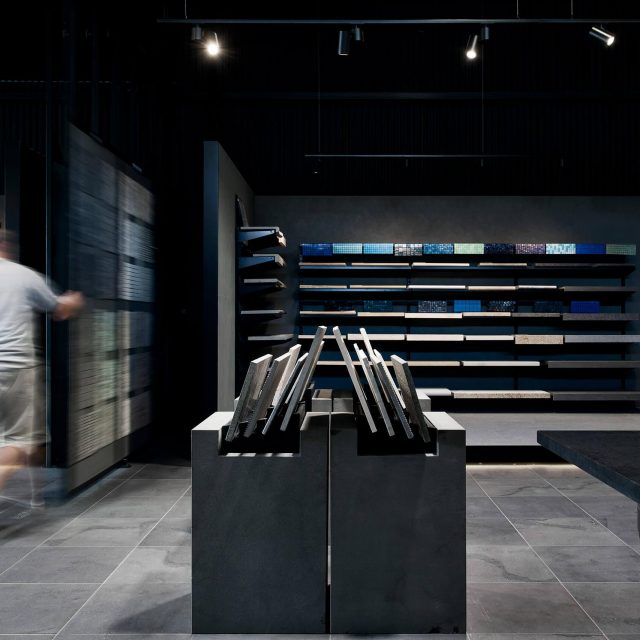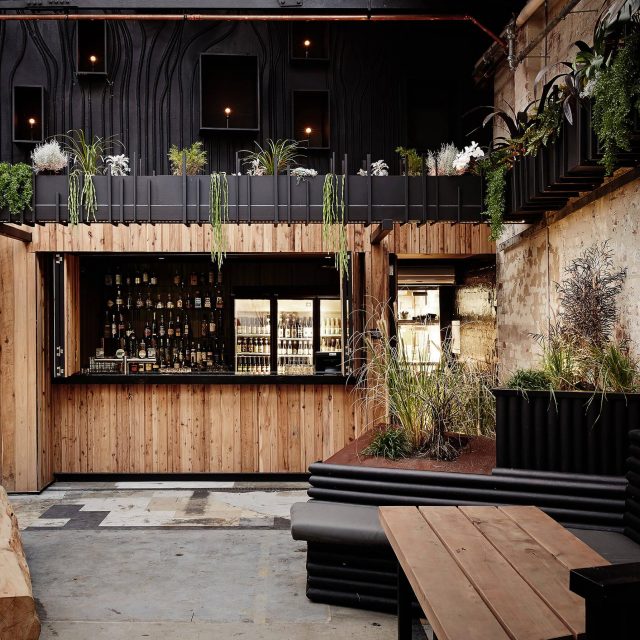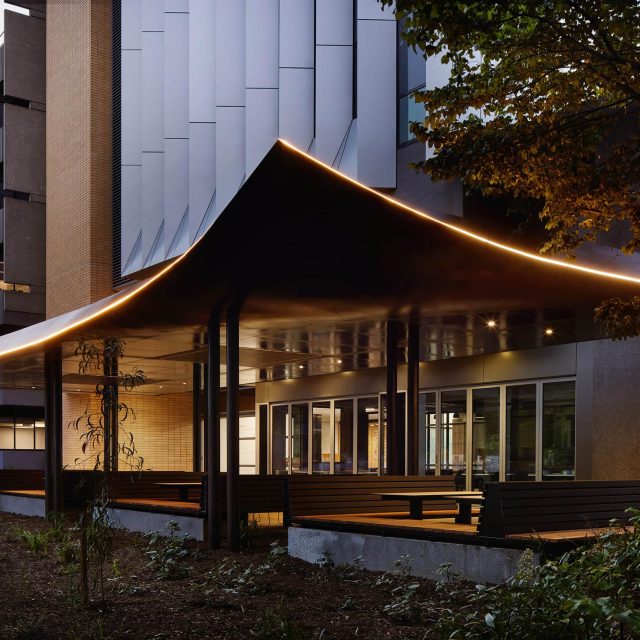
Located in the Lakes Entrance Region, Metung Hot Springs has a unique geographical connection between mountain and sea on the banks of Lake King where three alpine rivers culminate. Water that runs through the site has travelled from high in the New South Wales and Victorian forested hills as it has done for millions of years, forming the contours of the land and shaping the stone as it passes. As you experience the wellness offerings of the hot springs, the adopted design approach brings into focus the distinct natural environment which is intrinsically linked to the passage of water and to highlight the passage of time.
The underlying message of the comprehensive hot springs facility is to allow nature to dominate the experience. Significant works are ongoing to restore the natural environment to its pre-colonial state, and the built environment has been positioned to sit secondary to the landscape.
Responding to the context, the design encourages organic forms and a weathered palate. The occasional curated hard edge architectural intervention is designed to make the natural more apparent. Large site works and buildings alike prominently feature raw natural materials sourced locally. Natural stones softened by thousands of years of water erosion are used through the project, creating an immediacy to the ecological ideas of water’s filtration through minerals and stones. Layers of raw ironbark timber slabs continue the exploration of natural materials, forming showers and baths through the project.
At points where structural components were required, such as the entry pavilion and shading through the site, inspiration was abstracted from coastal Banksia leaves, elongated and folded. These structures intentionally omit guttering systems so that the water can dramatically fall, and cycle back through the site, ultimately being recycled to water the landscape and nearby golf course. Showers and change rooms use an ash batten application to shipping containers, creating a rustic filtration of light and shade. Details through the site using white-washed timber allude to the site’s link to water navigation, referencing nautical elements.
Nestled into the older portion of the Banksia Forest, accommodation is currently provided in 10 luxury camping villas positioned directly along the lagoon edge. The interiors offer a refined experience in harmony with nature. There is a continued use of natural materials and thoughtful details such as small lamp shades fashioned by an artisan in mud from the site. The tents open onto a balcony set to experience the lake and surrounding natural environment, including two geothermal hot barrels integrated into the deck.
The pinnacle of the recently opened facility is a series of hot baths set on a cliff’s edge overlooking the immense lake and ocean beyond, including dramatic picturesque views for sunset bathing. In addition to the pools and barrels, the venue hosts a multitude of mindfulness and wellness activities including massage and yoga.
The momentous opening of Metung Hot Springs is the first indication of an extensive master plan intended to be rolled out over the next decade or more. Future stages of the project include a main bathing gully with an adjacent amphitheatre designed to host music events, which is currently in construction. The site will eventually host a few larger buildings to support the wellness program. The accommodation offering will be greatly extended with a diversity of experiences including a full hotel, stand-alone cabins, family-style lodging and even a marina with berths to dock yachts and house boats including integrated bathing barrels.
Creating a harmonious relationship between the natural and built environment, Metung Hot Springs is an immersion into the site and a reintroduction to what this ancient landscape holds. As the subservient addition, the architecture enables visitors to fully experience the elements, both large and small, that make it so unique and special.
Back to Projects


















